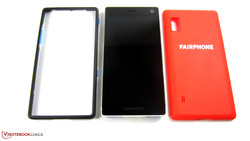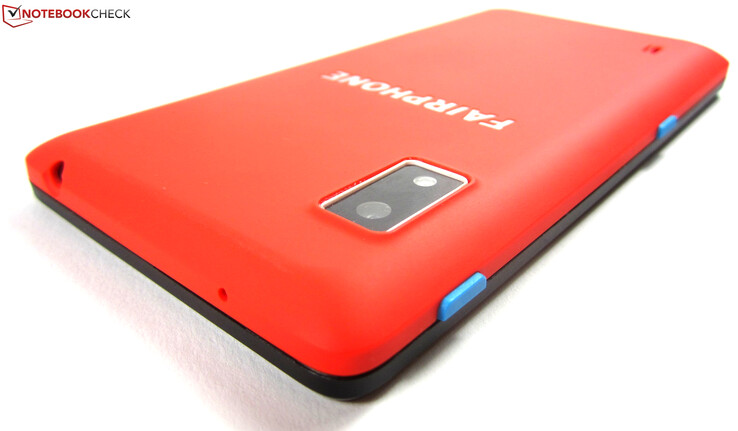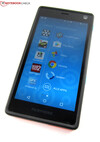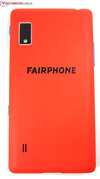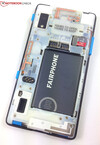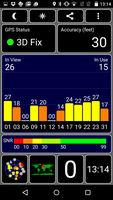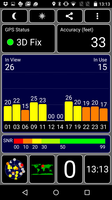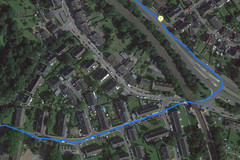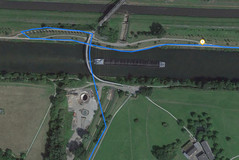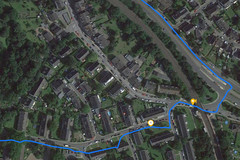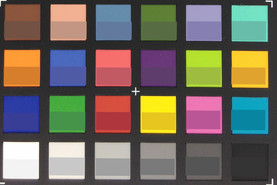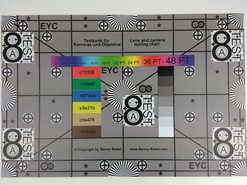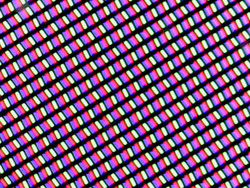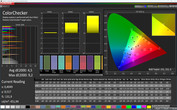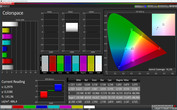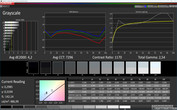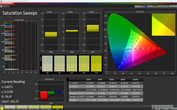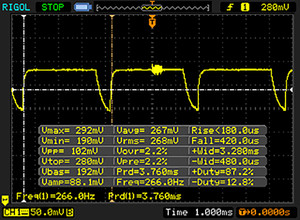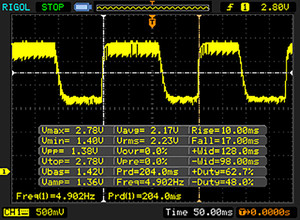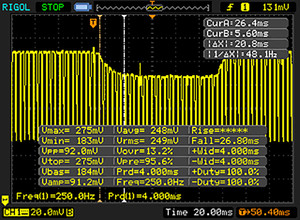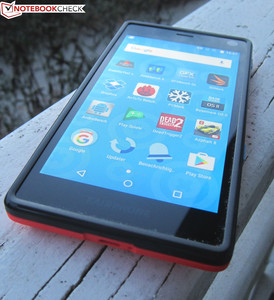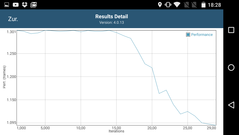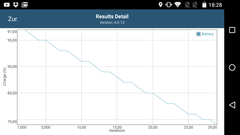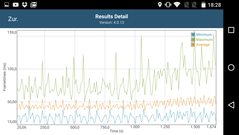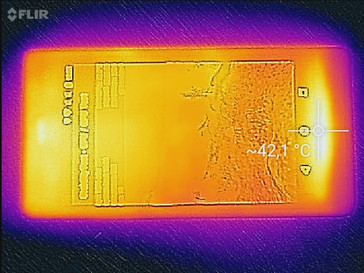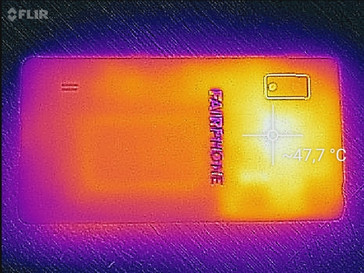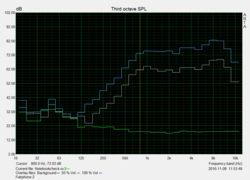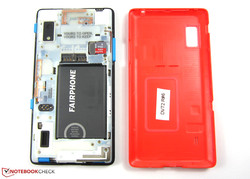Fairphone 2 Smartphone Review
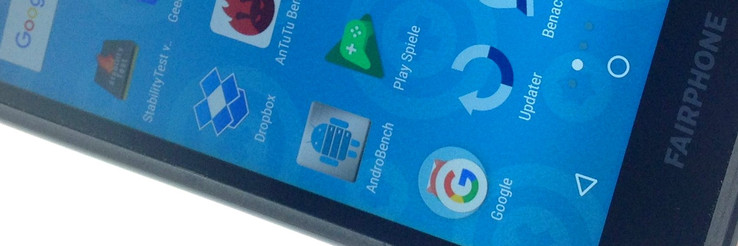
For the original German review, see here.
Every product is based on an idea. A campaign of the Waag Society, a research institution in Amsterdam, prompted this at Fairphone. It aimed to draw attention to conflict-minerals in consumer electronics as well as the wars that are financed by their mining. Tin, tantalum, tungsten, and gold are among the popular materials that are used for soldering, capacitors, vibration engines, and motherboards.
After three years of campaigning, leaving it up to consumer awareness was not enough. Instead, it was time to enter the market, offering a smartphone that was produced in line with ethical aspects. Social and ecological values were to be the top priorities in every step of the supply chain - starting at sourcing raw materials over production up to retail and recycling.
Curtains up for the Fairphone startup: Financed via crowdfunding, the company founded in 2013 launched its first smartphone in the same year. According to the manufacturer, the Fairphone, sold at 325 Euros (~$346), has been purchased 100,000 times since and thus emphatically proven that the idea of a smartphone, which is produced without exploiting humans and nature, can find many buyers.
The ethical smartphone has now entered the second round: The new Fairphone 2 edition focuses even more strongly on repairability and longevity than its predecessor. For this, the 5-inch Fairphone 2 is the first smartphone in the world to use a modular build. Components, such as screen or camera, can be swapped like in a Lego system, which makes it easy for the user to repair the smartphone or replace the present components with new or better versions. The manufacturer has slightly reworked its second iteration introduced in late 2015. The Fairphone 2 presently offered, on the manufacturer's website that we closely examined, now has a thinner back cover, which is available in four colors.
Our approximately 250 Euros (~$266) Fairphone 2, with a new back cover look, relies on Qualcomm's 801 MSM8974AA SoC alongside 2 GB of RAM and 32 GB of storage. Furthermore, a Wi-Fi 802.11ac, LTE, two SIM slots, and an 8-megapixel camera belong to the configuration. In line with its fairness claim, the manufacturer breaks down the production costs of its smartphone. According to the manufacturer, it only earns about 9 Euros (~$9.59) preliminary to tax. Some other smartphone manufactures often have a three-figure profit margin per device.
We let Fairphone's 2 compete against two categories of rivals in the test. Firstly, against the similarly equipped Sony's Xperia XA and Samsung's Galaxy A5 (2016). Secondly, Fairphone's 2 also has to compete with Huawei's P9 and Samsung's Galaxy S7 that are in a similar price range as the review sample.
Case
Fairphone's 2 presents itself in a very functional design that does not have much in common with the stylish metal looks of many rivals, and which will not win any beauty pageants. The 5-inch handset comes out of the box in three parts: Firstly, the preassembled body that literally allows looking inside thanks to its transparent polycarbonate casing, making it possible to see every single component of the smartphone immediately. Then, a two-part plastic protector appears. It is made of a black bezel that is slipped onto the smartphone's front and envelops the screen's Gorilla Glass 3 panel as well as the physical keys. It protects the handset when dropped. The actual back cover, which is coral red for our review sample, is snapped on the back. Fairphone's 2 is also available with back covers in indigo, cyan, and white for the same price of approximately 520 Euros (~$554).
The total construction of smartphone, bezel, and back cover is very solid. However, relatively light pressure is enough for it to produce cracking noises especially when a finger is pressed on the casings corners. Then again, the physical controls are beyond reproach: The power, camera, and volume buttons present an agreeably firm pressure point, and are fitted tightly in the casing with virtually no play toward the sides of their openings. With a height of 11 millimeters (~0.43 inches), the review sample is much thicker than comparison devices, like Samsung's Galaxy S7 and Sony's Xperia XA that are at most 7.9 millimeters (~0.31 in) tall. Fairphone's 2 also comes in last in the weigh-in. Its 172 grams (~6.1 oz) makes it roughly 20 to 30 grams (~0.7 to 1.1 lb) heavier than its rivals.
Fairphone's 2 reaps in the most plus points with its modular casing design, currently unique to the smartphone world. The smartphone can be torn down into six replaceable components; screen, camera, battery, the Core module (contains SoC, RAM, storage, and SIM slots among other things), the Top module (contains headset jack, nose cancellation microphone, LED, ambient light and proximity sensor, and the 2 megapixel camera), and the Bottom module (speaker, vibration mechanism, USB port, primary microphone). Only a few screws have to be released for this and it is just a matter of minutes. Fairphone offers the corresponding spare parts in its online shop. For example, a new screen module can be ordered easily should the screen crack (approx. 84 Euros/~$90), and it can even be replaced without any tools. A convenient side effect of the modular design: Fairphone has announced upcoming component upgrades and all six components can easily be replaced by stronger ones, such as the 8-megapixel camera with an even higher-resolution lens.
Connectivity
Fairphone's 2 can fall back on a quad-core SoC in form of Qualcomm's Snapdragon 801 MSM8974AA and its integrated Adreno 330 graphics accelerator. It was still a high-end model in 2014 but is now a bit rusty. As the test shows, it still has enough power alongside 2 GB of RAM to smoothly run applications and games. According to the specs, a slightly different Snapdragon 801 SoC powers Fairphone's 2 - the Snapdragon 801 MSM8974AB to be precise. We cannot confirm this based on our review sample - the Android system info and apps like CPU-Z and Geekbench 4 identified the SoC as the MSM8974AA in unison.
Approximately 24.7 GB of 32 GB storage is available in factory state. The storage can be expanded flexibly via the micro-SD slot. The manufacturer does not reveal up to what capacity but only parenthetically states that SDHC and SDXC formats are supported. Since SDXC cards theoretically provide up to 2 TB of capacity, the present upper capacity limit will likely correspond to that of the highest-capacity cards currently available on the market (256 GB). Moving apps to the micro-SD card was no problem in the test.
The micro-USB port on the lower edge transmits data only at 2.0 speed. In return, it supports USB OTG and allows, for example, connecting storage devices like USB flash drives to the smartphone via an adapter. Furthermore, video contents can be streamed from Fairphone's 2 to compatible monitors and projectors via Miracast.
Software
The slightly outdated Android 5.1 runs on Fairphone's 2. The manufacturer covers it with its proprietary Fairphone OS interface. It was version number 1.8.1 at test time.
The interface and features of Fairphone's OS largely correspond to stock Android. An app drawer that can be opened by swiping from the screen's right to the center has been added, for example. Then, the favorites list is displayed, which contains apps like Google Chrome, the phone app and the actual app drawer ("All Apps") in the preset. The app drawer is divided in active and inactive apps, which is to provide a better overview. An app becomes inactive when it has not been opened for over a month. The "Privacy Impact" feature fits the smartphone's fair play concept well: It checks the assigned access rights when an app is opened for the first time and displays a reminder. However, "Privacy Impact" does not contribute to higher security.
Fairphone limits itself to the Android-typical Google apps and tools, such as iFixit and the Amaze file manager, in terms of included software. A company-own updater that allows updating Fairphone's OS supplements this.
Communication and GPS
Fairphone's 2 supports the Wi-Fi 802.11ac standard in addition to Bluetooth 4.0 LE, and can thus transmit in both the 2.4 GHz and 5.0 GHz networks. In the test, it was fast without connection interferences or interruptions. With 254 MBit/s, Fairphone's 2 even outperformed Huawei's P9 that only achieved 189 MBit/s. The data transmission speed dropped to 164 MBit/s when the review sample was in receive mode. Although this is not a bad rate, the rivals manage much higher speeds. Samsung's Galaxy S7 is the leader with 281 MBit/s here.
Fairphone's 2 connects to mobile wireless networks via the GSM quad-band (850, 900, 1800, 1900 MHz), UMTS tri-band (900, 1900, 2100 MHz), and LTE Cat.4. Although the smartphone only covers the LTE bands 3 (1800 MHz), 7 (2600 MHz), and 20 (800 MHz), Europe's most important LTE channels are among them. Fairphone states a maximum download speed of 150 MBit/s and up to 50 MBit/s for uploads. Good: Fairphone's 2 offers two full-fledged slots for SIM cards (micro-SIM). Full-fledged because the user does not have to decide whether one should be reserved for a micro-SD card. Fairphone's 2 naturally also sports a micro-SD slot.
| Networking | |
| iperf3 transmit AX12 | |
| Samsung Galaxy S7 | |
| Fairphone 2 | |
| Huawei P9 | |
| iperf3 receive AX12 | |
| Samsung Galaxy S7 | |
| Huawei P9 | |
| Fairphone 2 | |
The GPS module in Fairphone's 2 located us with an accuracy of 10 meters (~33 feet) indoors and out - acceptable but many other smartphones do this even better. As usual, we test the tracking capabilities on our test bike route with both Fairphone's 2 and our Garmin Edge 500 reference navigation system. Fairphone's 2 displays some inaccuracies in the comparison. The route is correct for the most part, but the review sample takes some radical shortcuts that lead us straight through buildings and woods. The minor deviations ultimately add up to a noteworthy difference of 900 meters (~0.56 miles) in the route compared with Garmin's system. This comparison would have been even worse if Garmin's Edge 500 did not start on the wrong foot (see screenshot 2). The GPS module in Fairphone's 2 is nevertheless sufficiently accurate for typical app usage even if the user will sometimes have to tolerate some degree of error.
Telephone and Call Quality
The phone app in the Fairphone 2 follows the stock Android design. In addition to the keypad, a screen for quick dial numbers and managing favorites, an overview of recent calls, and a contact list are present. Fairphone's 2 provided a decent call quality in the test. Voices were always transmitted clearly, although they sometimes sounded a bit tinny. We did not experience interruptions or reception issues in the test.
Cameras
The 8-megapixel primary camera in Fairphone's 2 has a resolution of 3264x2448 pixels in the 4:3 format, and it still manages 3264x1836 pixels (6 megapixels) in the 16:9 format. The camera operates with an aperture of f/2.2, uses the Omnivision OV8665 as the image sensor, and offers an HDR feature alongside an LED flash besides a timer. Videos can be recorded at up to 1080p and 30 frames per second. The 2-megapixel webcam achieves a maximum photo resolution of 1600x1200 pixels and records videos in the 720p format.
The primary camera shoots decent photos in good light conditions. However, low-light conditions or darkness is a problem, and the camera displays very visible image noise. The camera sensor's limits are easily seen, especially in the first test photo (candle). The candle flame is virtually invisible and the reflection extinguishes it. The book on the candle's right can only be assumed at most. Fairphone's 2 camera capabilities are sufficient for occasional snapshots.
We photographed our test chart as full-frame as possible in defined light conditions. The original file is not edited in any way afterward. Fairphone's 2 reproduces the test chart sharply but produces shaky lines in distinct color transitions like in fonts or geometric patterns.
We examine the review sample's color reproduction in the same conditions with ColorChecker Passport. The Fairphone 2 color reproduction is quite warm and saturated, which leads to vivid-looking photos.
Accessories and Warranty
In addition to the Fairphone 2, the box contains a battery, a back cover in the selected color, and a quick start guide. A micro-USB cable or charger is not included. However, this is part of Fairphone's philosophy to contribute to reducing electronic scrap, since many users will likely already own a charger with a micro-USB port.
In the case of the modularly designed Fairphone 2, the topic of accessories is given top priority. All six modules that compose the smartphone (screen, camera, battery, Core module, top module, and bottom module) are available as spare parts in the manufacturer's web shop. The battery is the cheapest module (approx. 20 Euros/~$21), while the actual control center - the Core module - is the most expensive at around 310 Euros (~$330). Accessories, such as a transparent cover (27 Euros/~$29) and an amplifier (also 27 Euros), for Fairphone's 2 are also offered in the web shop. The manufacturer purposely does not offer a charger as an accessory.
Apart from the battery, all smartphone components come with a 24-month warranty. Only 12 months are given on the battery.
Input Devices and Handling
The capacitive touchscreen in Fairphone's 2 identifies up to 10 fingers at the same time. The Gorilla Glass 3 protected screen presents the fingers with agreeably little resistance, and it responded quickly to all inputs in the test. We also liked the physical keys. The power button and camera release as well as the volume control provide a crisp feedback and have an accurate pressure point. The stock Android keyboard is used by default. It can be replaced with optional keyboards from Google's Play Store. Voice control to input, for example, URLs or search terms, functioned impeccably.
Display
The 5-inch LCD panel in Fairphone's 2 has a resolution of 1920x1080 pixels, which results in a pixel density of 441 PPI. The smartphone not only displays contents very sharply, but it also convinces in the other image parameters, such as brightness. It belongs to the brightest smartphones in the comparison beside Huawei's P9 and Sony's Xperia XA with an average of 468 cd/m². Even 473 cd/m² were achieved in the more practical measurement with equally distributed bright and dark image areas (APL50). A light sensor automatically adapts the screen's brightness according to the ambient light so that the user is not blinded during use. The black level of 0.38 cd/m² and contrast ratio of 1253:1 are also good rates, and they lead to a crisp and vivid image reproduction subjectively.
Unfortunately, we measured screen flickering in every brightness setting. Its frequency of 266 Hz is relatively high, but sensitive users could perceive this as an annoying flickering.
| |||||||||||||||||||||||||
Brightness Distribution: 92 %
Center on Battery: 476 cd/m²
Contrast: 1253:1 (Black: 0.38 cd/m²)
ΔE ColorChecker Calman: 4.5 | ∀{0.5-29.43 Ø4.78}
ΔE Greyscale Calman: 4.2 | ∀{0.09-98 Ø5}
Gamma: 2.54
CCT: 7296 K
| Fairphone 2 IPS, 1920x1080, 5" | Sony Xperia XA IPS, 1280x720, 5" | Huawei P9 IPS-NEO, JDI, 1920x1080, 5.2" | Samsung Galaxy A5 2016 Super AMOLED, 1920x1080, 5.2" | Samsung Galaxy S7 SAMOLED, 2560x1440, 5.1" | |
|---|---|---|---|---|---|
| Screen | -30% | 9% | 23% | 23% | |
| Brightness middle (cd/m²) | 476 | 518 9% | 582 22% | 378 -21% | 350 -26% |
| Brightness (cd/m²) | 468 | 475 1% | 563 20% | 380 -19% | 351 -25% |
| Brightness Distribution (%) | 92 | 81 -12% | 91 -1% | 91 -1% | 98 7% |
| Black Level * (cd/m²) | 0.38 | 0.61 -61% | 0.38 -0% | ||
| Contrast (:1) | 1253 | 849 -32% | 1532 22% | ||
| Colorchecker dE 2000 * | 4.5 | 6.8 -51% | 4.4 2% | 1.95 57% | 2.04 55% |
| Colorchecker dE 2000 max. * | 9.2 | 11.4 -24% | 7.4 20% | 3.09 66% | 3.25 65% |
| Greyscale dE 2000 * | 4.2 | 7 -67% | 4.8 -14% | 1.86 56% | 1.63 61% |
| Gamma | 2.54 87% | 2.35 94% | 2.2 100% | 2.13 103% | 2.07 106% |
| CCT | 7296 89% | 8151 80% | 6175 105% | 6376 102% | 6391 102% |
| Color Space (Percent of AdobeRGB 1998) (%) | 77.78 | 86.86 | |||
| Color Space (Percent of sRGB) (%) | 99.44 | 99.35 |
* ... smaller is better
Analyzing Fairphone's 2 with CalMAN software and a photospectrometer still results in good outcomes. The color and grayscale reproduction are not far from the ideal range (DeltaE < 3) with 4.5 and 4.2. The color temperature of 7296 K is slightly increased (ideal: 6500 K), which leads to a somewhat too "cool" content reproduction. However, the user would have to look very closely to see this with the naked eye.
Screen Flickering / PWM (Pulse-Width Modulation)
| Screen flickering / PWM detected | 266 Hz | ≤ 100 % brightness setting | |
The display backlight flickers at 266 Hz (worst case, e.g., utilizing PWM) Flickering detected at a brightness setting of 100 % and below. There should be no flickering or PWM above this brightness setting. The frequency of 266 Hz is relatively high, so most users sensitive to PWM should not notice any flickering. However, there are reports that some users are still sensitive to PWM at 500 Hz and above, so be aware. In comparison: 53 % of all tested devices do not use PWM to dim the display. If PWM was detected, an average of 8111 (minimum: 5 - maximum: 343500) Hz was measured. | |||
Display Response Times
| ↔ Response Time Black to White | ||
|---|---|---|
| 27 ms ... rise ↗ and fall ↘ combined | ↗ 10 ms rise | |
| ↘ 17 ms fall | ||
| The screen shows relatively slow response rates in our tests and may be too slow for gamers. In comparison, all tested devices range from 0.1 (minimum) to 240 (maximum) ms. » 66 % of all devices are better. This means that the measured response time is worse than the average of all tested devices (20.2 ms). | ||
| ↔ Response Time 50% Grey to 80% Grey | ||
| 51 ms ... rise ↗ and fall ↘ combined | ↗ 26 ms rise | |
| ↘ 25 ms fall | ||
| The screen shows slow response rates in our tests and will be unsatisfactory for gamers. In comparison, all tested devices range from 0.165 (minimum) to 636 (maximum) ms. » 87 % of all devices are better. This means that the measured response time is worse than the average of all tested devices (31.6 ms). | ||
Fairphone's 2 is well equipped for outdoor use with its bright and high-contrast screen. Like in every modern smartphone, reflections could impair the view. However, this is not a problem for a WhatsApp chat or typing phone numbers. Nevertheless, the user should look for a shaded place when browsing the Internet or reading longer texts.
For construction-related reasons, the IPS panel prevents Fairphone's 2 from achieving the viewing angle stability of devices with an AMOLED panel, such as Samsung's Galaxy A5 (2016) and Samsung's Galaxy S7. However, the IPS screen brightens up slightly, which affects legibility, only when looking at it from extreme angles.
Performance
Qualcomm's Snapdragon 801 MSM8974AA quad-core SoC provides Fairphone's 2 with fast system performance. The smartphone still runs smoothly when many apps are opened simultaneously. Qualcomm's Adreno 330 graphics chip is integrated.
Apart from deviations in BaseMark OS II, Fairphone's 2 is on par with Samsung's Galaxy A5 (2016) in the synthetic benchmarks. The equally strong Sony Xperia XA leads both smartphones with a slight advantage on paper. As expected, the three do not have a chance against the much higher performance Huawei P9 and Samsung Galaxy S7.
| AnTuTu v6 - Total Score (sort by value) | |
| Fairphone 2 | |
| Sony Xperia XA | |
| Huawei P9 | |
| Samsung Galaxy A5 2016 | |
| Samsung Galaxy S7 | |
| Geekbench 4.0 | |
| 64 Bit Single-Core Score (sort by value) | |
| Fairphone 2 | |
| Huawei P9 | |
| 64 Bit Multi-Core Score (sort by value) | |
| Fairphone 2 | |
| Huawei P9 | |
| GFXBench (DX / GLBenchmark) 2.7 | |
| T-Rex Onscreen (sort by value) | |
| Fairphone 2 | |
| Sony Xperia XA | |
| Huawei P9 | |
| Samsung Galaxy A5 2016 | |
| Samsung Galaxy S7 | |
| 1920x1080 T-Rex Offscreen (sort by value) | |
| Fairphone 2 | |
| Sony Xperia XA | |
| Huawei P9 | |
| Samsung Galaxy A5 2016 | |
| Samsung Galaxy S7 | |
| GFXBench 3.0 | |
| on screen Manhattan Onscreen OGL (sort by value) | |
| Fairphone 2 | |
| Sony Xperia XA | |
| Huawei P9 | |
| Samsung Galaxy A5 2016 | |
| Samsung Galaxy S7 | |
| 1920x1080 1080p Manhattan Offscreen (sort by value) | |
| Fairphone 2 | |
| Sony Xperia XA | |
| Huawei P9 | |
| Samsung Galaxy A5 2016 | |
| Samsung Galaxy S7 | |
| GFXBench 3.1 | |
| on screen Manhattan ES 3.1 Onscreen (sort by value) | |
| Sony Xperia XA | |
| Huawei P9 | |
| Samsung Galaxy S7 | |
| 1920x1080 Manhattan ES 3.1 Offscreen (sort by value) | |
| Sony Xperia XA | |
| Huawei P9 | |
| Samsung Galaxy S7 | |
| PCMark for Android - Work performance score (sort by value) | |
| Fairphone 2 | |
| Sony Xperia XA | |
| Huawei P9 | |
| Samsung Galaxy A5 2016 | |
| Samsung Galaxy S7 | |
In the browser benchmarks the Fairphone 2 runs practically simultaneously with the Samsung Galaxy A5 (2016) and the Sony Xperia XA over the finish line. Again, the Huawei P9 and the Samsung Galaxy S7 play in their own league.
| Octane V2 - Total Score (sort by value) | |
| Fairphone 2 | |
| Sony Xperia XA | |
| Huawei P9 | |
| Samsung Galaxy A5 2016 | |
| Samsung Galaxy S7 | |
| Mozilla Kraken 1.1 - Total (sort by value) | |
| Fairphone 2 | |
| Sony Xperia XA | |
| Huawei P9 | |
| Samsung Galaxy A5 2016 | |
| Samsung Galaxy S7 | |
| WebXPRT 2015 - Overall (sort by value) | |
| Fairphone 2 | |
| Sony Xperia XA | |
| Huawei P9 | |
| Samsung Galaxy A5 2016 | |
| Samsung Galaxy S7 | |
| JetStream 1.1 - Total Score (sort by value) | |
| Fairphone 2 | |
| Sony Xperia XA | |
| Huawei P9 | |
| Samsung Galaxy A5 2016 | |
| Samsung Galaxy S7 | |
* ... smaller is better
The clear line between the two classes is interrupted a bit in the write-read benchmarks. In random 4KB data transfer, Fairphone's 2, Samsung's Galaxy A5 (2016), and Sony's Xperia XA still lag behind Huawei's P9 and Samsung's Galaxy S7. However, only the Galaxy S7 has the lead in sequential read and write while the Fairphone 2 more or less pulls level with the P9. This is also true in the tests with our Toshiba Exceria Pro M401 reference card (read max. 95 MB/s, write max. 80 MB/s). Fairphone's 2 is, however, far from exhausting the micro-SD card. Only Sony's Xperia XA and Samsung's Galaxy S7 achieve this to some degree.
| Fairphone 2 | Sony Xperia XA | Huawei P9 | Samsung Galaxy A5 2016 | Samsung Galaxy S7 | |
|---|---|---|---|---|---|
| AndroBench 3-5 | 66% | 193% | 50% | 217% | |
| Sequential Read 256KB (MB/s) | 202.4 | 240.4 19% | 281.3 39% | 209.4 3% | 483.8 139% |
| Sequential Write 256KB (MB/s) | 104.1 | 68.6 -34% | 72.2 -31% | 60.4 -42% | 145.7 40% |
| Random Read 4KB (MB/s) | 10.77 | 22.05 105% | 39 262% | 22.9 113% | 85.9 698% |
| Random Write 4KB (MB/s) | 5.01 | 10.6 112% | 47.45 847% | 11.2 124% | 16.01 220% |
| Sequential Read 256KB SDCard (MB/s) | 39.33 | 72.9 85% | 55 40% | 72.3 84% | |
| Sequential Write 256KB SDCard (MB/s) | 24.08 | 50.7 111% | 24.83 3% | 53.6 123% |
Games
Although the Adreno 330 integrated into Qualcomm's SoC might not be the newest graphics accelerator, it helps Fairphone's 2 in achieving good gaming performance. Even demanding games like "Asphalt 8: Airborne" and "Dead Trigger 2" ran smoothly using the maximum detail setting. The smartphone's control sensors also functioned impeccably.
Emissions
Temperature
The surface temperatures of Fairphone's 2 reach uncritical rates when in use. We measured up to 45.9 °C (115 °F) in some spots, but it only averaged 38.9 °C (102 °F) on both the upper side and underside. Interestingly, the smartphone does not get much cooler while idling. Here, an average of 37.3 °C (99 °F) was recorded. However, not everything stays cool inside - Fairphone's 2 throttles its CPU clock rate to limit temperature development during full load. Throttling occurs after about the 16th time of 30 runs using GFXBench's battery test.
(±) The maximum temperature on the upper side is 40.3 °C / 105 F, compared to the average of 35.2 °C / 95 F, ranging from 21.9 to 247 °C for the class Smartphone.
(-) The bottom heats up to a maximum of 45.9 °C / 115 F, compared to the average of 34 °C / 93 F
(±) In idle usage, the average temperature for the upper side is 37.6 °C / 100 F, compared to the device average of 32.9 °C / 91 F.
Speaker
The mono speaker in Fairphone's 2 is situated on the casing's back. However, its volume is not muffled even when placing the smartphone on a table thanks to its special build. The small speaker provides a sufficient maximum volume for everyday use with 88.7 dB(A). The user should nevertheless not expect too much. High tones prevail while mids - not to mention basses - are at most sporadically audible.
Fairphone 2 audio analysis
(+) | speakers can play relatively loud (88.7 dB)
Bass 100 - 315 Hz
(-) | nearly no bass - on average 35.4% lower than median
(±) | linearity of bass is average (8% delta to prev. frequency)
Mids 400 - 2000 Hz
(+) | balanced mids - only 4.9% away from median
(+) | mids are linear (5.2% delta to prev. frequency)
Highs 2 - 16 kHz
(+) | balanced highs - only 4% away from median
(+) | highs are linear (3.6% delta to prev. frequency)
Overall 100 - 16.000 Hz
(±) | linearity of overall sound is average (21.4% difference to median)
Compared to same class
» 41% of all tested devices in this class were better, 8% similar, 51% worse
» The best had a delta of 11%, average was 35%, worst was 134%
Compared to all devices tested
» 59% of all tested devices were better, 7% similar, 34% worse
» The best had a delta of 4%, average was 24%, worst was 134%
Sony Xperia XA audio analysis
(+) | speakers can play relatively loud (82 dB)
Bass 100 - 315 Hz
(-) | nearly no bass - on average 24.9% lower than median
(±) | linearity of bass is average (7.9% delta to prev. frequency)
Mids 400 - 2000 Hz
(±) | higher mids - on average 5.3% higher than median
(±) | linearity of mids is average (9.3% delta to prev. frequency)
Highs 2 - 16 kHz
(±) | higher highs - on average 10.7% higher than median
(±) | linearity of highs is average (7% delta to prev. frequency)
Overall 100 - 16.000 Hz
(±) | linearity of overall sound is average (29.3% difference to median)
Compared to same class
» 76% of all tested devices in this class were better, 4% similar, 20% worse
» The best had a delta of 11%, average was 35%, worst was 134%
Compared to all devices tested
» 87% of all tested devices were better, 3% similar, 11% worse
» The best had a delta of 4%, average was 24%, worst was 134%
Samsung Galaxy A5 2016 audio analysis
(+) | speakers can play relatively loud (87.7 dB)
Bass 100 - 315 Hz
(-) | nearly no bass - on average 33.7% lower than median
(±) | linearity of bass is average (11.1% delta to prev. frequency)
Mids 400 - 2000 Hz
(+) | balanced mids - only 4.2% away from median
(+) | mids are linear (5.4% delta to prev. frequency)
Highs 2 - 16 kHz
(+) | balanced highs - only 4.7% away from median
(±) | linearity of highs is average (8.4% delta to prev. frequency)
Overall 100 - 16.000 Hz
(±) | linearity of overall sound is average (22.1% difference to median)
Compared to same class
» 46% of all tested devices in this class were better, 7% similar, 47% worse
» The best had a delta of 11%, average was 35%, worst was 134%
Compared to all devices tested
» 63% of all tested devices were better, 6% similar, 31% worse
» The best had a delta of 4%, average was 24%, worst was 134%
Frequency diagram in comparison (checkboxes above can be turned on/off!)
Energy Management
Power Consumption
Fairphone's 2 gets its energy from a 2420 mAh lithium-ion battery and it does not exactly handle the battery gingerly. Apart from Huawei's P9, the smartphone demands a relatively high amount of power compared with the rivals, and it even defeats the power-guzzling P9 in maximum power consumption.
| Off / Standby | |
| Idle | |
| Load |
|
Key:
min: | |
| Fairphone 2 2420 mAh | Sony Xperia XA 2300 mAh | Huawei P9 3000 mAh | Samsung Galaxy A5 2016 2900 mAh | Samsung Galaxy S7 3000 mAh | |
|---|---|---|---|---|---|
| Power Consumption | 10% | -8% | 4% | 14% | |
| Idle Minimum * (Watt) | 0.64 | 0.72 -13% | 0.77 -20% | 0.96 -50% | 0.68 -6% |
| Idle Average * (Watt) | 1.61 | 1.5 7% | 2.36 -47% | 1.64 -2% | 1.02 37% |
| Idle Maximum * (Watt) | 1.77 | 1.57 11% | 2.37 -34% | 1.71 3% | 1.14 36% |
| Load Average * (Watt) | 5.02 | 3.48 31% | 3.09 38% | 2.98 41% | 4.73 6% |
| Load Maximum * (Watt) | 6.98 | 6.04 13% | 5.35 23% | 5.08 27% | 7.16 -3% |
* ... smaller is better
Battery Runtime
Fairphone's 2 battery life is disappointing overall as it cannot equal the performance of the comparison devices in any benchmark scenario. The smartphone is depleted after only 5:21 hours in the realistic Wi-Fi test - this might just be enough for one workday. Sony's Xperia XA comes closest to Fairphone's 2, and it cannot boast with its battery life, either. The review sample endurance is far from that of the Samsung Galaxy A5 (2016). We cannot give a generalized statement concerning charging time of Fairphone's 2 since it depends on the output of the used power supply.
| Fairphone 2 2420 mAh | Sony Xperia XA 2300 mAh | Huawei P9 3000 mAh | Samsung Galaxy A5 2016 2900 mAh | Samsung Galaxy S7 3000 mAh | |
|---|---|---|---|---|---|
| Battery runtime | 20% | 81% | 170% | 114% | |
| Reader / Idle (h) | 9.9 | 12.9 30% | 25.2 155% | 38.7 291% | 30.2 205% |
| H.264 (h) | 5.7 | 7.7 35% | 9.5 67% | 11.2 96% | 14.9 161% |
| WiFi v1.3 (h) | 5.4 | 5.9 9% | 9.5 76% | 10.4 93% | 7.6 41% |
| Load (h) | 2.7 | 2.8 4% | 3.4 26% | 8.1 200% | 4 48% |
Pros
Cons
Verdict
High standards have been set: Raw materials from sources aware of their responsibility rather than financed by warlords, fair wages and worker's representatives rather than exploitation, fair labor conditions rather than sweatshops, and recycling rather than disposal in the scrap yard. It should be clear that a smartphone produced in such fair conditions would not be a bargain. Priced at 520 Euros (~$554), Fairphone's 2 is also almost twice as expensive as many models with a similar configuration. And unlike the price maybe suggests, buyers do not get a high-end smartphone but, seen soberly, a mid-range handset based on Android 5.1, solid performance, and a decent camera - and not much more, either.
Fairphone's 2 is outside all manufacturing conventions and has a simple, unique selling point with its modular design. However, the smartphone will have a hard time on the market due to its high price.
However, to reduce Fairphone's 2 to just its price and the available performance would be ... well - unfair. Unlike "conventionally" manufactured mobile devices, it actually does not have any rivals and, strictly seen, it is incomparable. The makers are ultimately not interested in offering the cheapest mobile device possible. The price takes a secondary place behind the highest possible social and environmental-friendly production. Its price is simply a consequence of this. And that again is one of the biggest strengths of Fairphone's 2: It prompts buyers to think about how much money they should really spend on a smartphone if humans and not profits stand in focus of the supply chain. The answer is directly included.
The review sample comes with a real killer feature, and thus we increase the total rating by one point. The modular design shows that users can repair a smartphone on their own with little effort and that it is even possible to replace the hardware or install improved features. It should be quite obvious that the industry is against this and want users to buy a completely new and expensive smartphone instead of cheaper hardware upgrades. The consistent total idea of Fairphone's 2 convinced us although the purchase decision could have been made easier. After all, some compromises have to be made in terms of configuration, which are minor in sum.
Fairphone 2
- 11/24/2016 v5.1 (old)
Manuel Masiero




